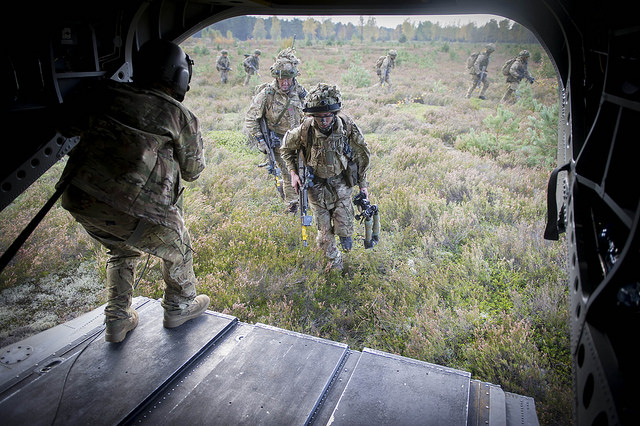Insight
August 11, 2016
U.S. NATO Commitments Are Not Optional

Summary
- The Baltic states of Estonia, Latvia, and Lithuania share borders with Russia to the east and south.
- After witnessing Russian aggression in Ukraine, the Baltic states are increasing defense spending—in the past year by an average of 18 percent.
- The United States should honor its treaty commitment to defend the North Atlantic Treaty Organization (NATO) allies and stand strongly against Russian aggression.
Introduction
Shortly before becoming the Republican presidential nominee, Donald Trump indicated that he would place new conditions on collective security within NATO.
When asked about Russia’s regional aggression and specifically a potential Russian attack on the Baltic States, Mr. Trump stated that he may withhold U.S. military assistance if the states have not “fulfilled their obligations” to “make payments.”
The following is an analysis of the NATO treaty obligation for collective defense as well as the membership goal of spending 2 percent of GDP on defense and an evaluation of how the Baltic states fit in to the equation.
NATO Membership
Along with four other Eastern European countries, the Baltic states joined NATO in 2004. Membership in NATO came with the promise under Article 5 of the North Atlantic Treaty that an armed attack against one member would be considered an attack against all members. As a consequence, members are obligated to exercise collective self-defense to assist members that are attacked.
In recent years, a revanchist Russia has embarked on a significant military buildup in the Baltic Sea region, encroaching on the maritime and terrestrial borders of Baltic and Nordic states. Sweden reported the discovery of a Russian submarine in the Baltic Sea in 2014. Earlier this year, Russian warplanes buzzed the USS Donald Cook when the U.S. missile destroyer was en route to the Lithuania.
In addition to bolstering its naval presence in the Baltic Sea, Russia recently announced plans to place up to 30,000 troops along its western and southwestern border, with at least 10,000 positioned just east of Estonia and Latvia. If Moscow follows through with this plan, tensions will likely rise between Russia and the Baltic states, whose combined forces total roughly 28,000 troops.
Defense Spending
In 2006, defense ministers of NATO member states collectively pledged to spend at least 2 percent of each country’s GDP on defense. Estonia currently meets that goal. Latvia and Lithuania each spend around 1 percent of GDP on defense. All three Baltic states, however, have demonstrated a commitment to significantly increase domestic defense spending in recent years. From 2014 to 2015, Estonia, Latvia, and Lithuania boosted military expenditures by 6, 14, and 33 percent, respectively. The United States should encourage these efforts to increase defense spending.
Moreover, alliances are not merely about dollars and cents—they are about strategy and statecraft. NATO members do not buy their way into the alliance by spending 2 percent of GDP on defense. NATO existed for over 50 years before its members collectively pledged to work toward increased defense spending. The 2 percent goal is just that, not an obligation and certainly not a condition of collective defense.
Conclusion
The international community set a dangerous precedent in allowing Russia to invade Ukraine and annex Crimea. If Russia attacks a Baltic nation next, the United States should stand strongly with its NATO allies, respect its treaty obligations, reject Russian expansionism, and defend territorial sovereignty – because a nation without borders is not a nation at all.










